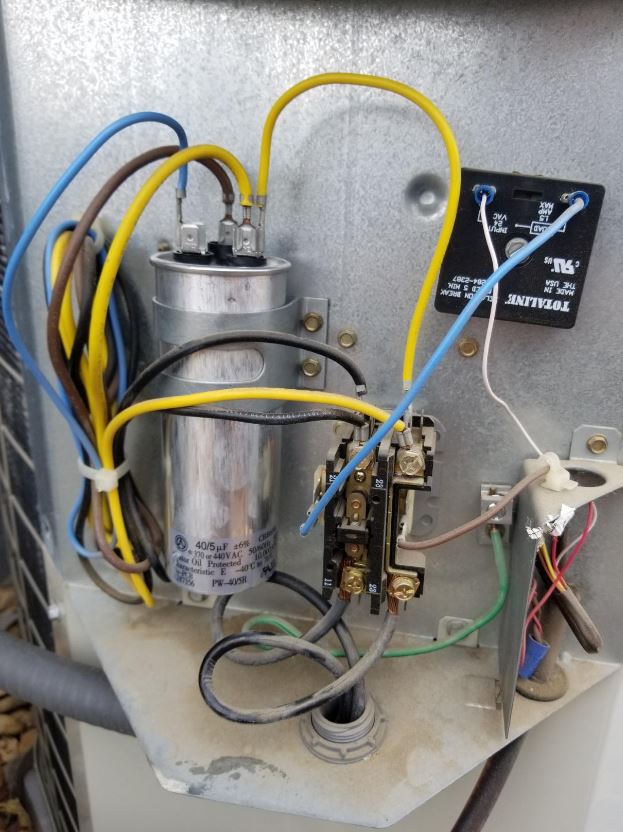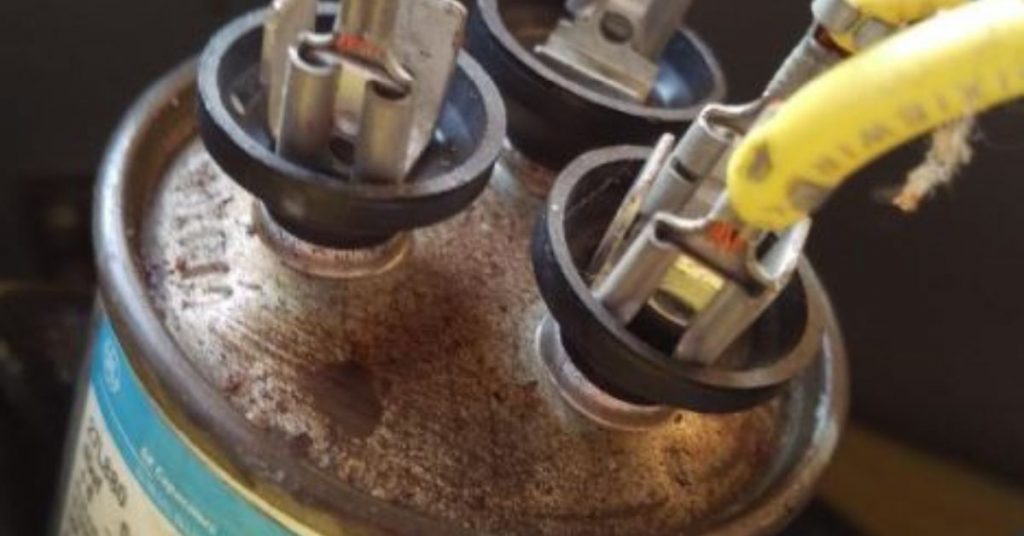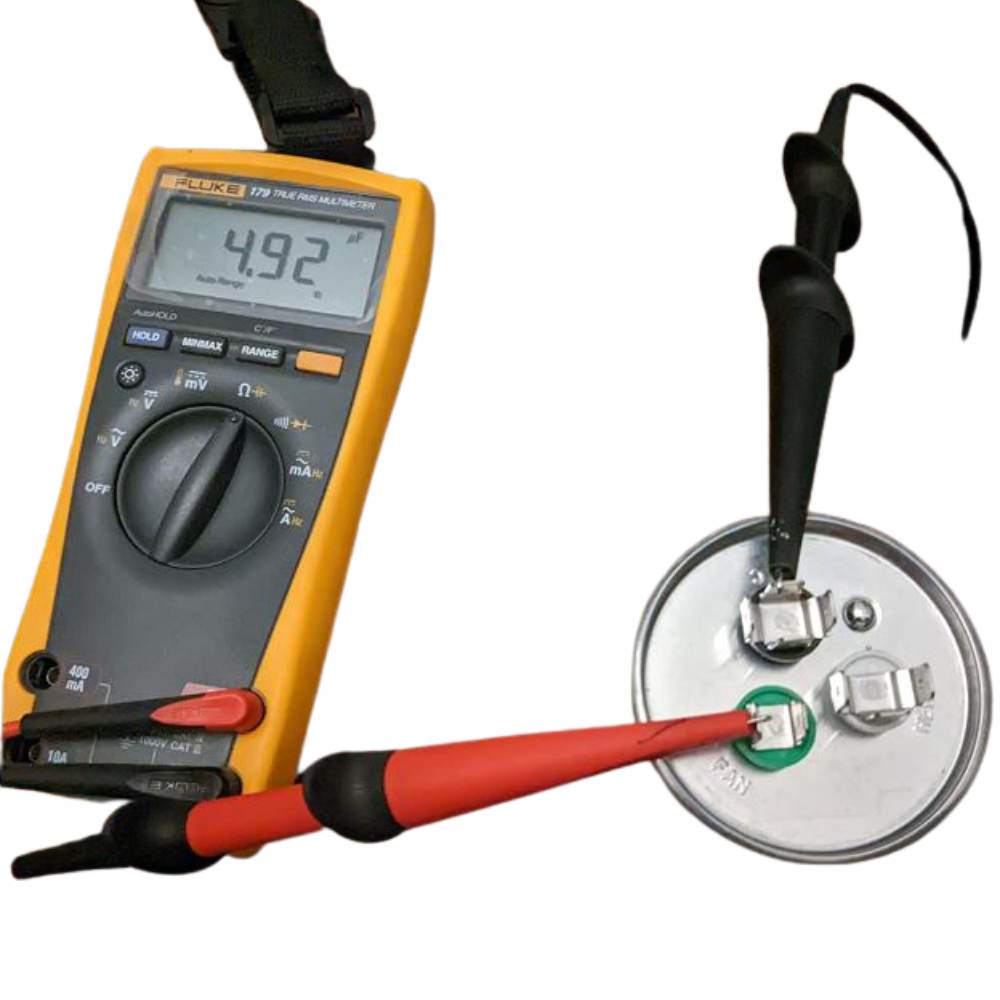
When your AC unit is buzzing but the fan is not spinning, it’s a common issue that can be caused by various factors. This problem can lead to reduced cooling efficiency or even a complete breakdown of your air conditioning system. Here’s a summary of the causes and solutions for this problem:
Causes
- Capacitor Issues: A malfunctioning capacitor, either the start capacitor or run capacitor, can prevent the fan motor from starting.
- Motor Problems: A faulty fan motor due to wear and tear or electrical issues can result in the fan not spinning despite the buzzing noise.
- Blocked or Stuck Fan: Debris, ice buildup, or a stuck fan blade can physically hinder the fan from turning.
- Electrical Problems: Wiring problems, such as a loose connection or a damaged wire, can disrupt the electrical flow to the fan motor.
- Thermostat Malfunction: An improperly functioning thermostat may not be sending the correct signals to the AC unit, preventing the fan from turning on.
Solutions
- Capacitor Replacement: If the capacitor is faulty, it should be replaced by a qualified technician. Capacitors store electrical charge and can be dangerous to handle.
- Motor Replacement: If the fan motor is the culprit, it may need to be replaced. This is typically a job for an HVAC professional.
- Fan Maintenance: Regularly clean the outdoor unit to prevent debris and ice buildup. If the fan is stuck, carefully attempt to free it, but be cautious not to damage the blades.
- Check Wiring: Inspect the wiring and connections for any loose or damaged wires. Reconnect or replace them as needed.
- Thermostat Check: Ensure the thermostat is set to the correct cooling mode and temperature. If it’s malfunctioning, consider replacing or recalibrating it.
- Professional Inspection: If you’re uncertain about the cause or unable to resolve the issue on your own, it’s best to contact a licensed HVAC technician. They can diagnose the problem accurately and perform the necessary repairs or replacements.
The Role of Capacitors in Air Conditioners

Most appliances in your home have a capacitor. Capacitors generally work like batteries in that they store electric charge and only release it when needed.
AC capacitors are located in the outside unit where they power the compressor and fan motors. Usually, motors will need 1.5 times of the voltage provided by the supply lines to startup properly.
Homes in North America and other countries are supplied with 240 volts meaning that 240 volts multiplied by 1.5 is 360 volts. And that is the reason why AC capacitors have a voltage of over 360 volts (usually from 370 volts).
There are start and run capacitors. Start capacitors provide the motor with the necessary torque needed to start and when the motor starts to spin, the capacitor disconnects from the circuit.
On the other hand, run capacitors maintain the necessary current needed by the motor while running and hence stays connected to the circuit during the cooling cycle.
Most AC systems however do not have a start capacitor. The run capacitor performs both of those functions.
There are also 2 types of run capacitors. You AC unit could have 2 single capacitors (one for the fan and the other for the compressor motor) or a dual capacitor which serves both the compressor and then fan.
If the AC run capacitor fails, the motors will not be supplied with the necessary startup torque. As a result, the motor will hum/buzz which means it is struggling to kick in while the fan will not spin.
With 2 single capacitors, one could be bad while the other one could be good. Since capacitors are inexpensive, I would recommend replacing both of them or even replace them with a dual capacitor (especially if you are paying a technician to do it).
Troubleshooting a Humming Air Conditioner Whose Fan is Not Spinning
The first thing you should do if your outside unit is buzzing but fan is not spinning is to try and manually spin the fan. To do this, you will need a long thin stick or a screwdriver.
Insert the stick or screwdriver through the grille at the top of the unit and manual turn one of the fan blade clockwise. If the fan picks up and continues to spin as usual, you indeed have a bad capacitor.
What you have done in this case, is “replaced” the capacitor’s job with you own power and that is why the fan starts to spin.
You should however not continue using the AC with a bad capacitor. That will overwork other AC components which not only increase power consumption but may make them overheat and fail prematurely.
The best way to however be sure that you capacitor is bad is by testing it with a multimeter. As I said, sometimes the problem could be the contactor or something else.
Here is how to test and replace the AC capacitor:
1. Turn off Power to the Air Conditioner
Before proceeding with this job, you will need the following:
- Screwdriver with an insulated handle
- Multimeter
- Insulated gloves
Since there will be 240 volts flowing to the unit, the first thing you need to do is cut it off. Turn off power to the AC unit. There will be a breaker box on the wall near the unit or you will need to do so from inside the house.
With the power turned off, there will still be a small voltage flowing to the unit when the thermostat calls for cooling. Therefore, you will need to turn off the thermostat as well.
2. Inspect the Capacitor
With the power turned off, grab the screwdriver and remove the cover panel which is held in place using 4 screws. You can now see your dual run capacitor or 2 single run capacitors.
A dual capacitor will have 3 terminals (common, fan and herm (compressor)). Single capacitors will be 2 in number and will also have 2 terminals.
Sometimes it is easy to tell a bad capacitor by how it looks. Does your capacitor look swollen? If the capacitor has bulged/mushroomed at the top or bottom, it is clearly bad and will need to be replaced.

Also, is there a fluid (dielectric fluid) leaking out of the capacitor? That is also another sign of a failed capacitor.
It is important to note that a capacitor can still look good and still be bad. And that is why you need to test the capacitor.
3. Test the Capacitor
The first thing you need to do is discharge the capacitor. As I said, capacitors store a high charge and can shock you if you touch the terminals without first discharging them.
To discharge the capacitor, you will need your screwdriver with an insulated handle and to put on the gloves. If you have a single capacitor. Just short the terminals by using the metal part of the screwdriver to make contact between the 2 terminals.
With a dual capacitor, first short the COMMON and HERM terminals and then COMMON and FAN terminals. That makes the capacitor safe to handle.
To make your work easy, disconnect the capacitor from the unit. You need to first note how the wires are connected together since that is how you will need to connect the new capacitor as well. If you don’t think you can remember just take a picture with your phone.
Undo the wires and also remove the strap connecting the capacitor to the body of the unit.
Check the capacitor’s rating. If you have a dual capacitor, it will have 2 capacitance rating, the higher one being for the compressor and the lower one for the fan. It will be something like 45/5 uF (microfarads). Single capacitors will have a single capacitance rating.
You will also see a percentage written next to the capacitance (usually 6%). That means that the capacitance of the capacitor should be between 94% and 106% of the given value.
To test the capacitor, set your multimeter to capacitance (MFD/uF). For a single capacitor just place the 2 probes on the terminals and note the multimeter reading.
If you have a dual capacitor start by testing the capacitance between COMMON and HERM terminals and then COMMON and FAN. Note down the readings as well.

The readings should tell you if the capacitor is bad or no. for instance, if the capacitance on the capacitor is 45 microfarads and the margin given is 6%, you need to get a capacitance reading of between 42.3 and 47.7 microfarads.
Note: with a dual run capacitor, one side could be good while the other one could be bad. Since it is a single unit, you will still need to replace it.
4. Replace the Capacitor
If you have come to the conclusion that the capacitor is bad, replacing it with a new one is the solution. It is important to make sure that you replace the capacitor with another one of the same rating (capacitance and voltage).
Also, don’t buy the cheapest capacitor you can find. Some capacitors will not even last for a year while some will last for 10 years or more. Get a quality capacitor.
After buying the capacitor, install it the same way you removed the old one. Start by strapping it to the unit then connect all the wires as they should. Put back the cover panel and turn on the power and thermostat.
Check out if the air conditioner is running smoothing and that the fan is spinning properly.
AC Fan Still Not Spinning After Replacing Capacitor?
If you have a replaced the air conditioner capacitor but the fan is still not spinning, you most likely are dealing with a bad contactor. The contactor is located next to the capacitor and their work is to control the flow of electricity to the air conditioner.

The contactor is controlled by the thermostat. If the thermostat calls for cooling, the contactor has a plunger which will make contact with the circuit hence current can flow to the entire unit. When the house is properly cooled, the plunger will break the contact and current supply will be cut off.
Contactors can get burnout out after years of usage due to wear and tear or due to overheating. They could also get stuck in the open position, meaning that they will block current from flowing to the AC unit.
Sometimes the problem could be as simple as the contactor being loosely attached, which you can fix by tightening the connections. However, a bad contactor should be replaced.
Again, electrical DIYers can easily replace an AC contactor. Most homeowners should however hire an HVAC technician to do it correctly and safely.
And that is why your air conditioner outside unit is buzzing but fan is not spinning. I hope that this post has answered your question and that you now know what to do.
